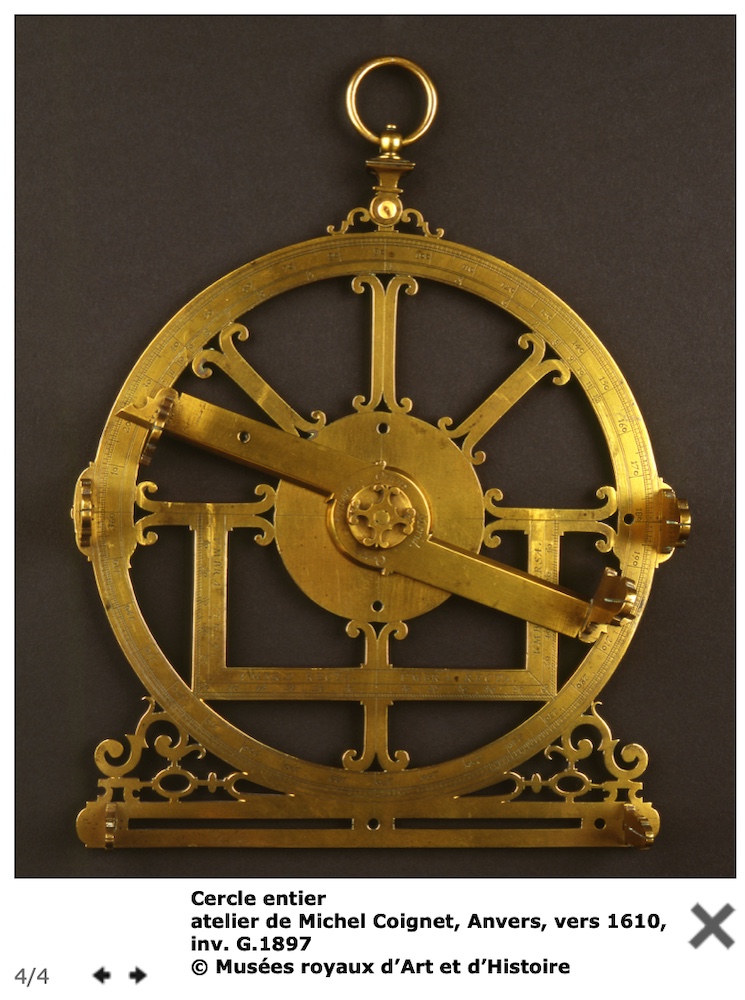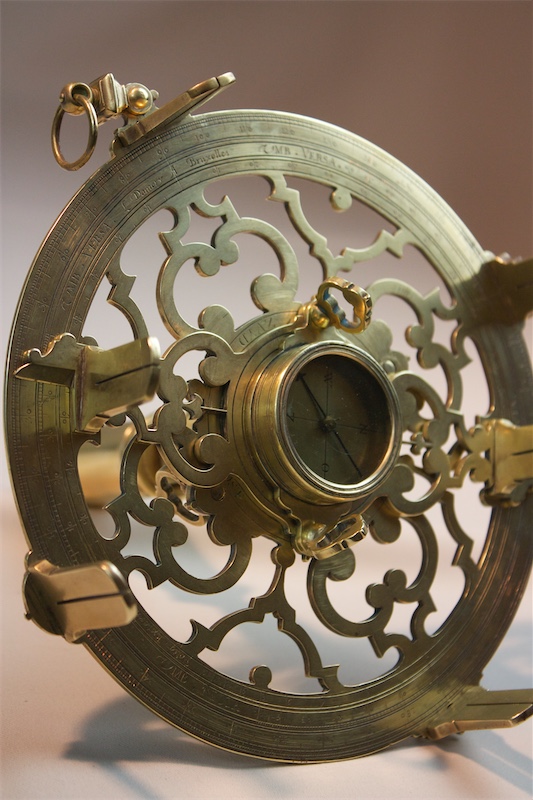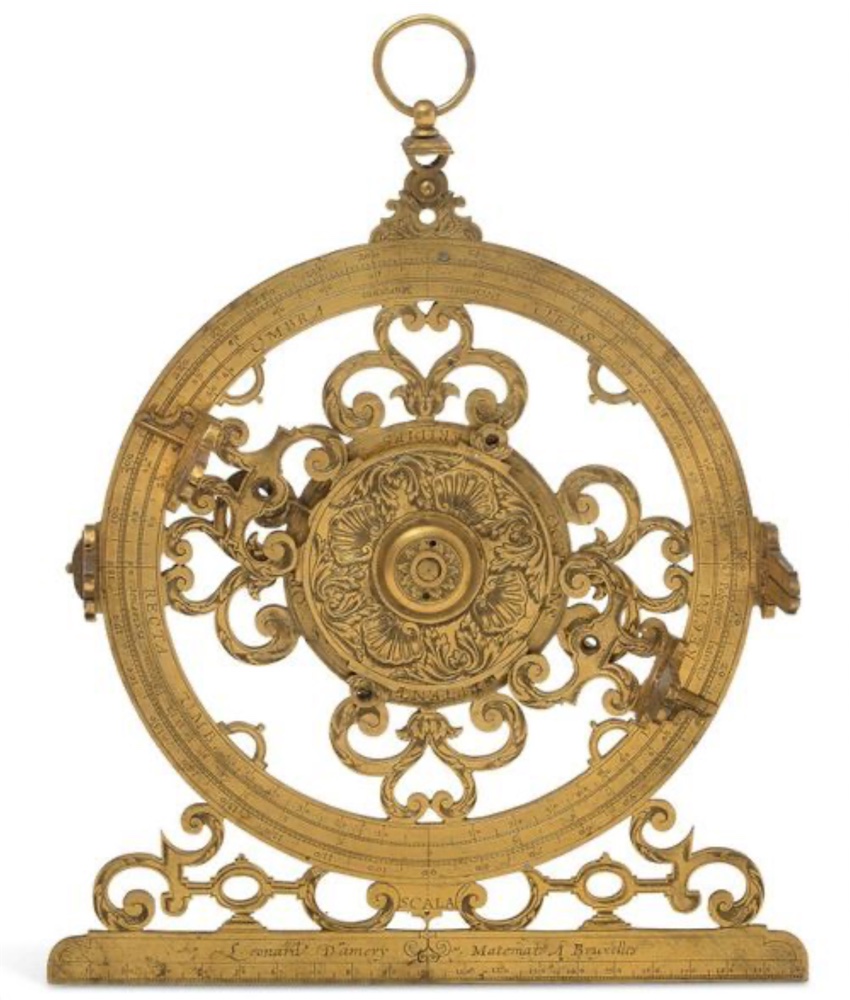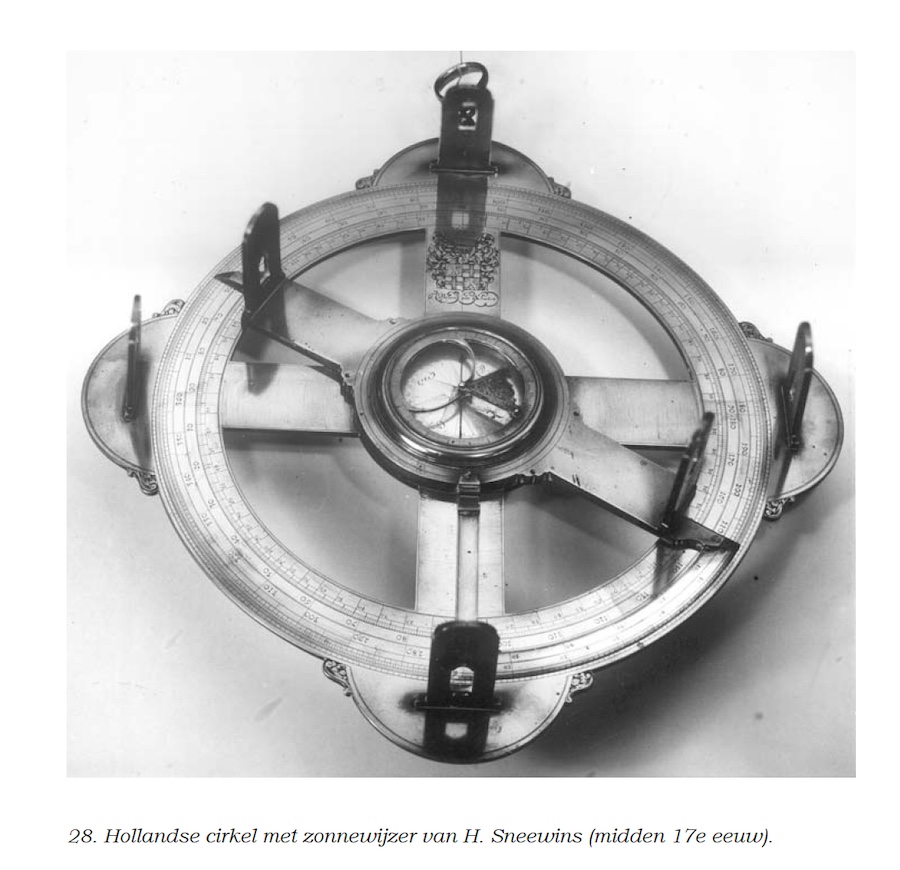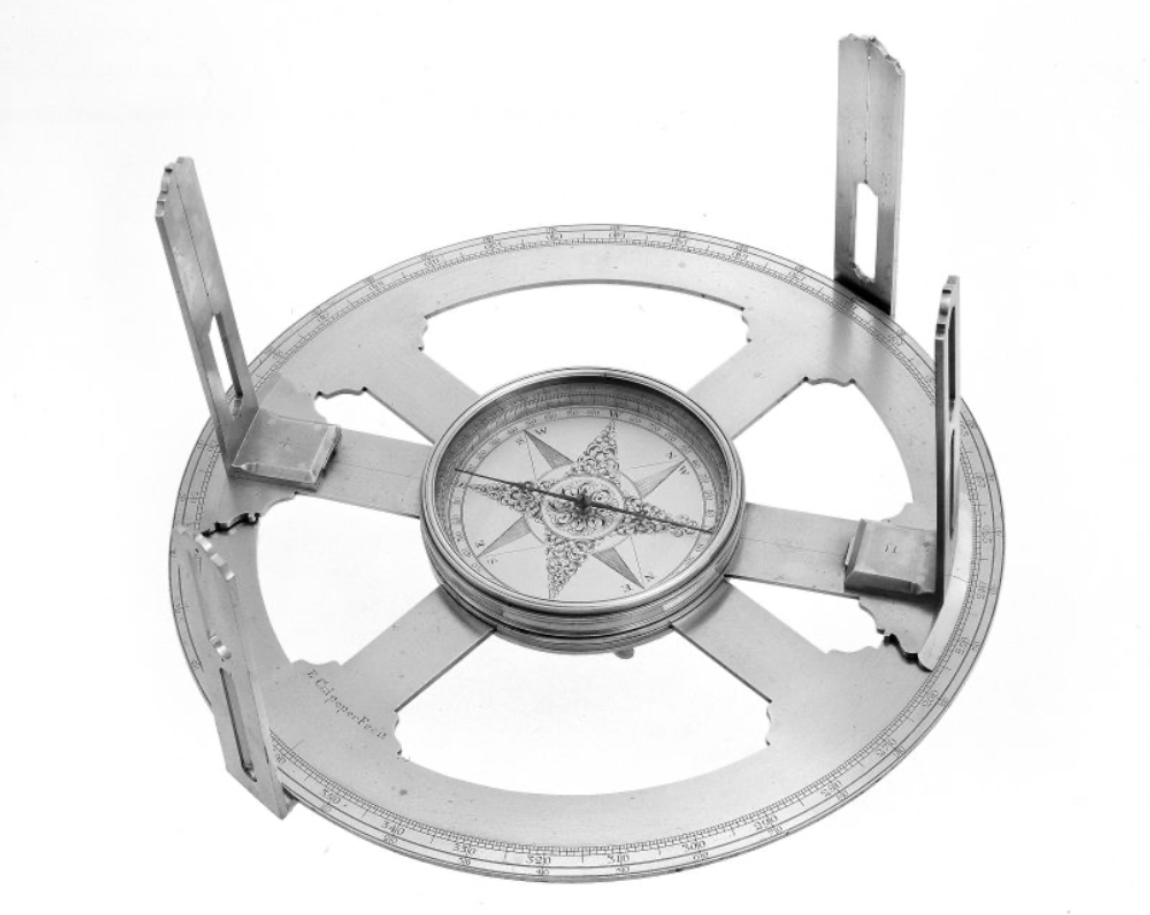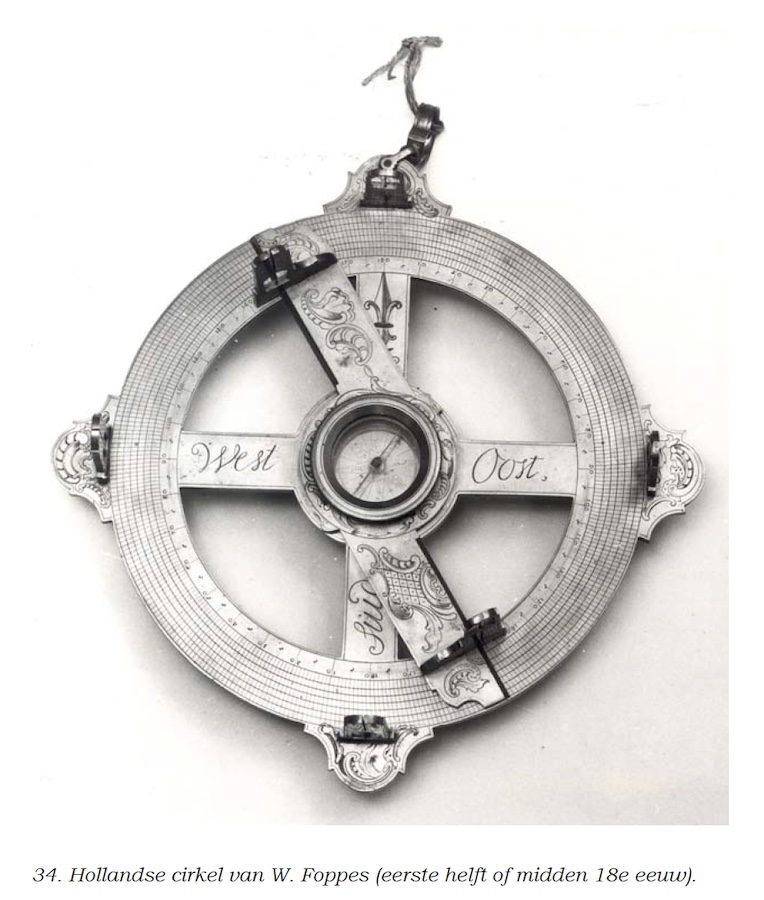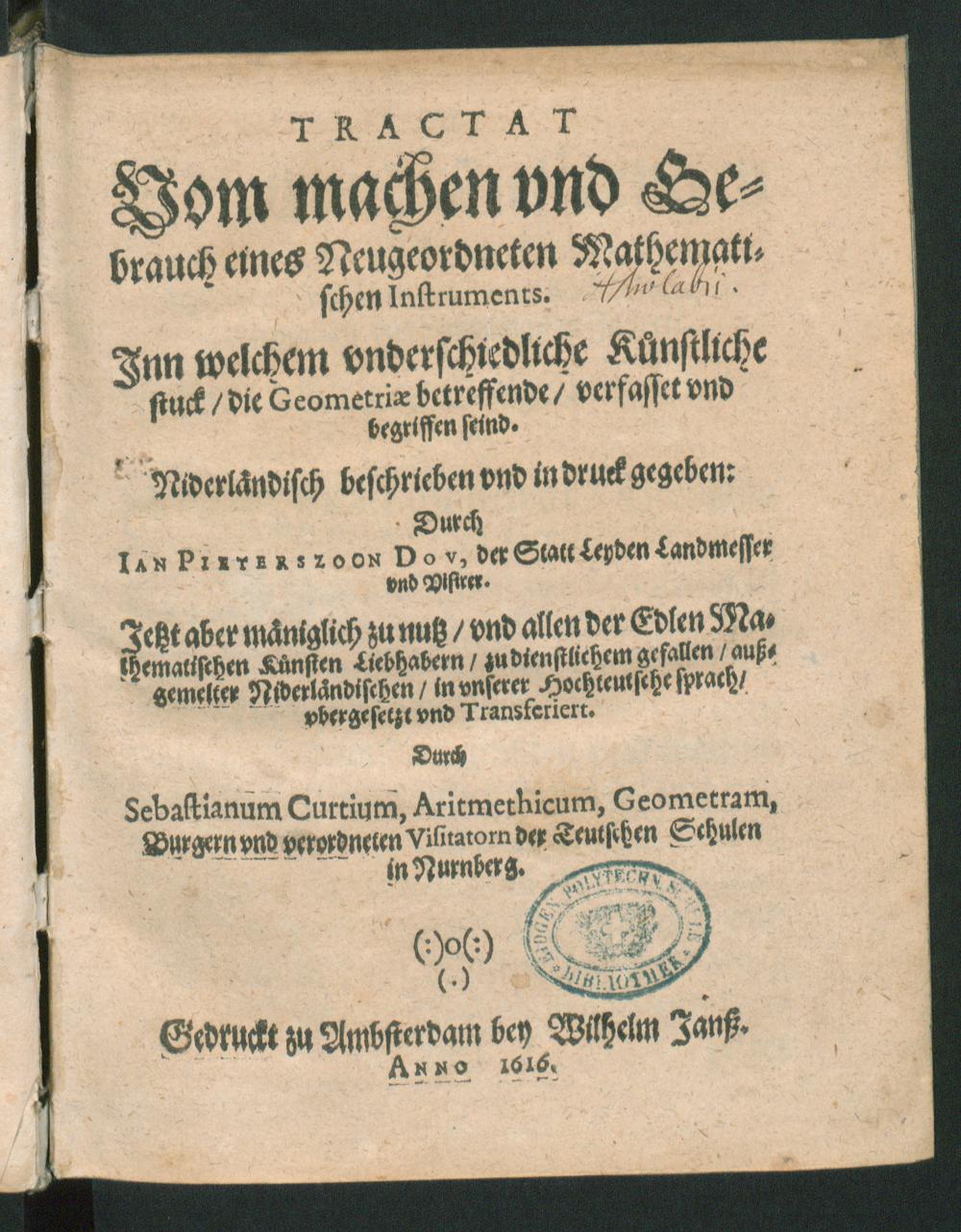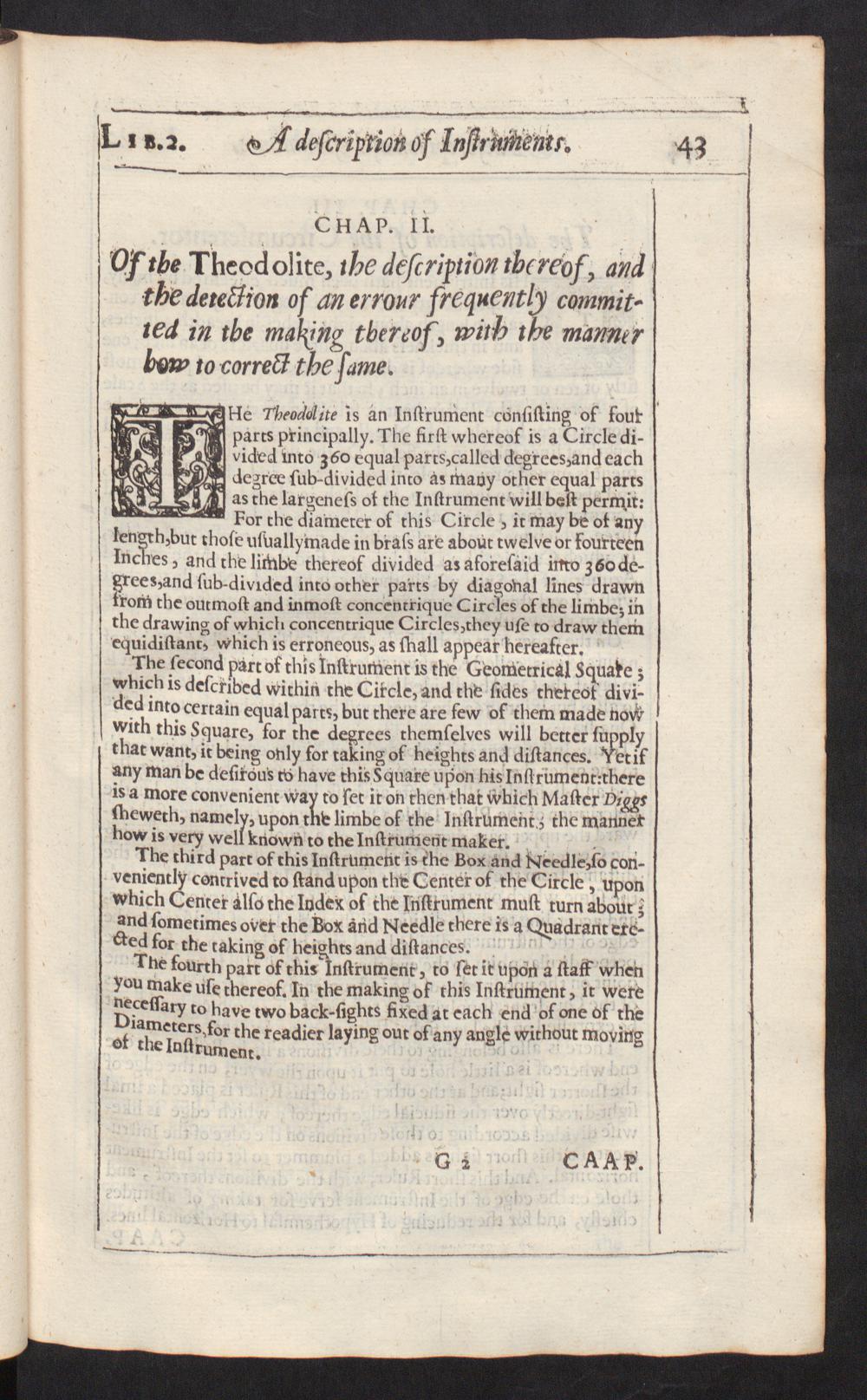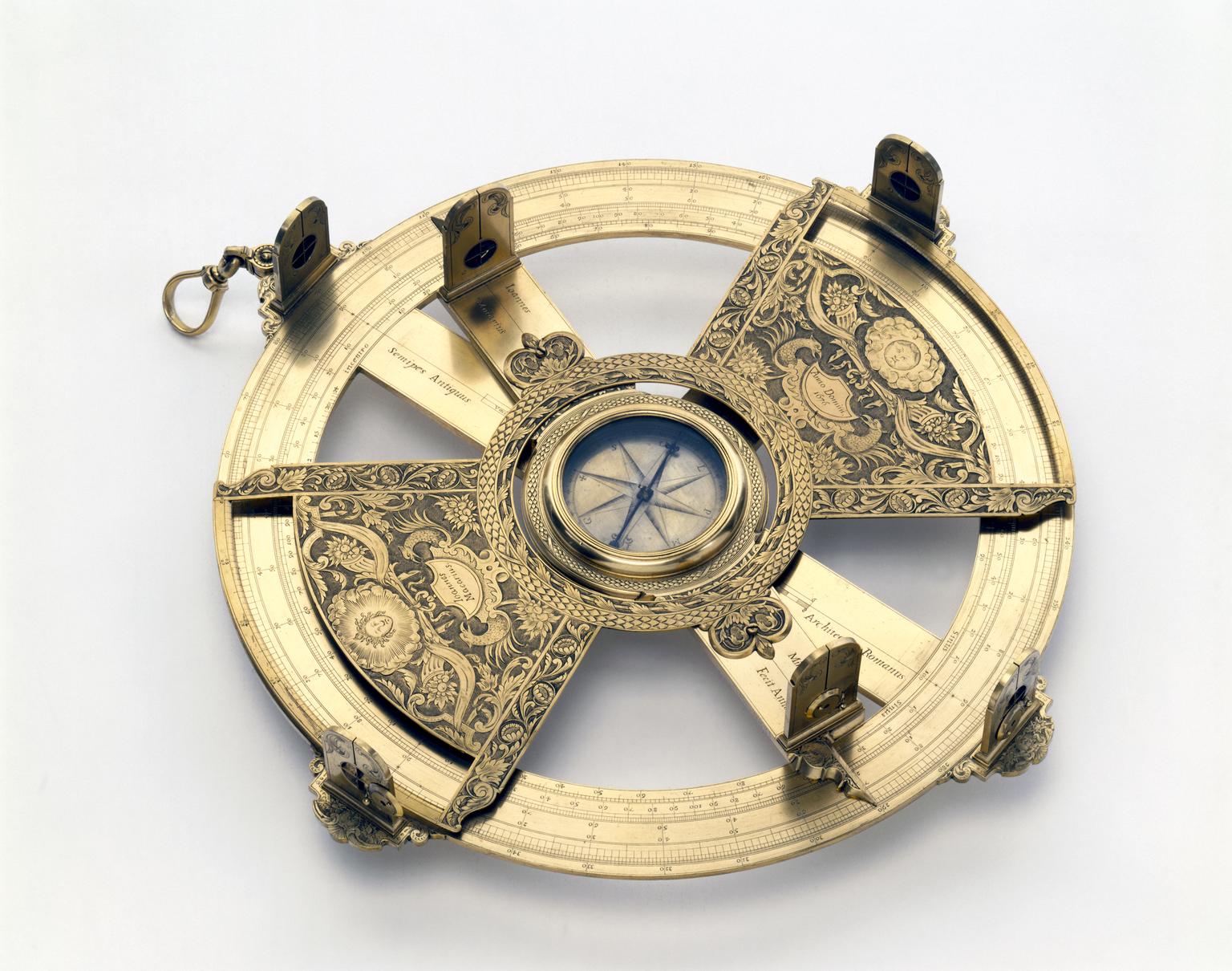
Beautiful Theodolite Made by Johnny's Macarius in 1776
Second Generation Theodolites (Circa 1600 to 1750)
Theodolites made before 1600 (First Generation Theodolites) were basically a modified back plate of an Astrolabe - a smallish circular disc made of brass without cutouts and often featuring a Geometric Square scale to measure heights.
Theodolites evolved into much more usable surveying instruments around 1600 or so. The most important change that occurred in 1600 - Makers started producing larger diameter instruments that featured cutouts inside the circle to reduce the weight of the instruments. Larger diameter instruments were more accurate and allowed the surveyor to take longer sightings. Some of these very early Second Generation Theodolites did not have magnetic compasses.
I see two distinctly different types of Circa 1600 Second Generation Theodolites. The first type is highly artistic, and may or may not have a magnetic compass. These theodolites will have a divided outer ring, and may have inner scales as well, such as for Polygons (used in military surveying for fortifications) or the circular equivalents of a Geometric Square for measuring heights. Some of these very early Second Generation Theodolites did not have magnetic compasses.
Hightly Artistic Early Second Generation Theodolites (Circa 1600 to 1650)
Dou's Holland Circle - Early Second Generation Theodolites (Circa 1600 to 1650)
The second type of early Second Generation Theodolite - Dou's Holland Circle.
In the early 1600s the Dutch opted for a less artistic but more utilitarian Theodolite design. Jan Petersz Dou designed and popularized a version of the Theodolite that would become the primary form of the instrument for roughly 150 years, allowing for certain design enhancements along the way. Dou's design was so popular that even today many Theodolites made between 1600 to 1800 are called Holland Circles (google "Holland Circle" in various languages to check this out).
Dou's design included a large diameter full circle with large cutouts to reduce weight. The Dou theodolite featured 4 fixed sight vanes 90 degrees apart, so they formed a surveyor's cross. Dou's theodolite also featured 2 more sight vanes and an alidade. The outer circle was divided in 360 degrees in whatever increments the diameter size could sustain. The National Museum of American History has an 11 inch Holland Circle made by Steur that is divided in 15 minute increments, for example. I have a 10.5 inch Holland Circle made by Fiebig that is divided in 10 minute increments - I need a magnifying glass to read that instrument!
The Dou design also featured numerous inner scales based on trigonometry - sines, tangents and secants. The Dou theodolite also included a hook so the the instrument could be used vertically and horizontally. So when the trig scales were used with the appropriate tables, a surveyor could measure both distances and heights quickly and accurately.
While many Holland Circles have a magnetic compass with a divided 360 degree circle, the magnetic compass is fixed to the compass base - the magnetic compass does not rotate when the alidade is moved. This enhancement comes later in time.
Dou was a surveyor - author, who published several texts on surveying in the early 1600s, including a 1616 text that discussed his Theodolite design. His texts were published in both Dutch and German, so his writings covered a fairly large area.
H.C.Pouls wrote awonderful but lengthy article in Dutch regarding Dou and his Theodolite. The Dutch article is here. I translated the article into english using Google translate, and the article is pretty readable. I'm not going to post the translation on my website, but I will send it to you if you email me.
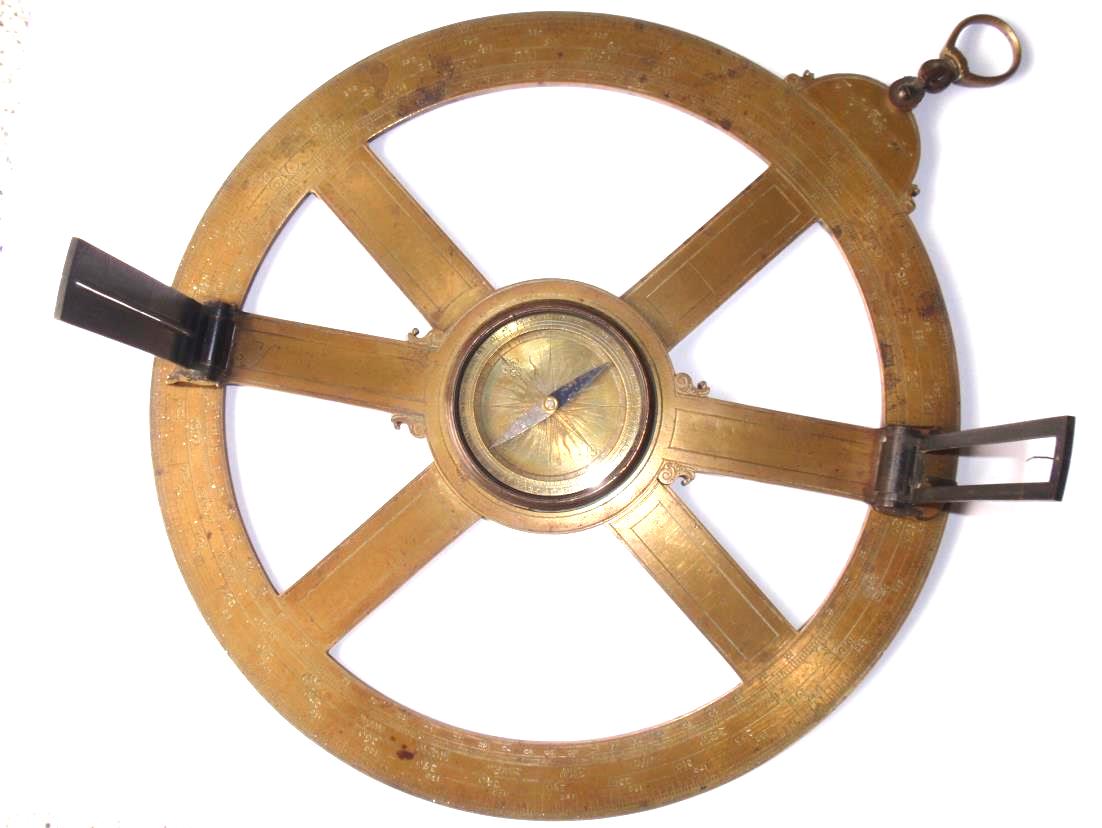
1643 Holland Circle by Fiebig
The Evolution of Second Generation Theodolites (Circa 1650 to 1750)
Dou's early 1600s Theodolite design proved to be a winner from a big picture perspective. But the design did evolve in some meaningful ways over time:
1. The Dou design featured a hook so that the theodolite could be used vertically to measure heights. The hook pretty much disappeared by 1700 (in response to the development of telescopic levels??).
2. The Trigonometric scales that were such a big part in Dou's original design disappeared by 1700 as well.
3. When divided into 10 or 15 minute increments, Dou's outer divided ring required a large diameter and keen eyes. Instrument makers used at first a transversal scale and then a vernier scale to decrease the diameter of theodolites while making the theodolites more accurate and easier to read. (I know that Eyre recommended the transversal scale in his 1654 book on surveying on page 2)
4. Dou's original design used 6 sight vanes (4 fixed vanes forming a cross and 2 moveable vanes on the alidade). I think the number of vanes was based largely on what surveyors wanted. Based on what I've seen, I suspect that 4 vaned theodolites proved to be the most popular, then 6vanes, and finally then 2 vanes.
5. Dou's design featured a divided magnetic compass that didn't rotate with the alidade. Over time makers changed the design so that the compass would rotate with the alidade. This allowed the surveyor to take bearings using the magnetic compass, so the theodolite could operate as a Circumferentor (surveyor's compass) if necessary.
6. Dou's utilitarian look (4 spoke plus alidade designed) was commonly used in many european countries. France, the largest country in europe at the time, preferred the Graphometer (semicircle) over the theodolite. But a few French makers made a theodolite type instrument (using a full-circle), and some of them added a good deal of artistic flair to their Theodolites.
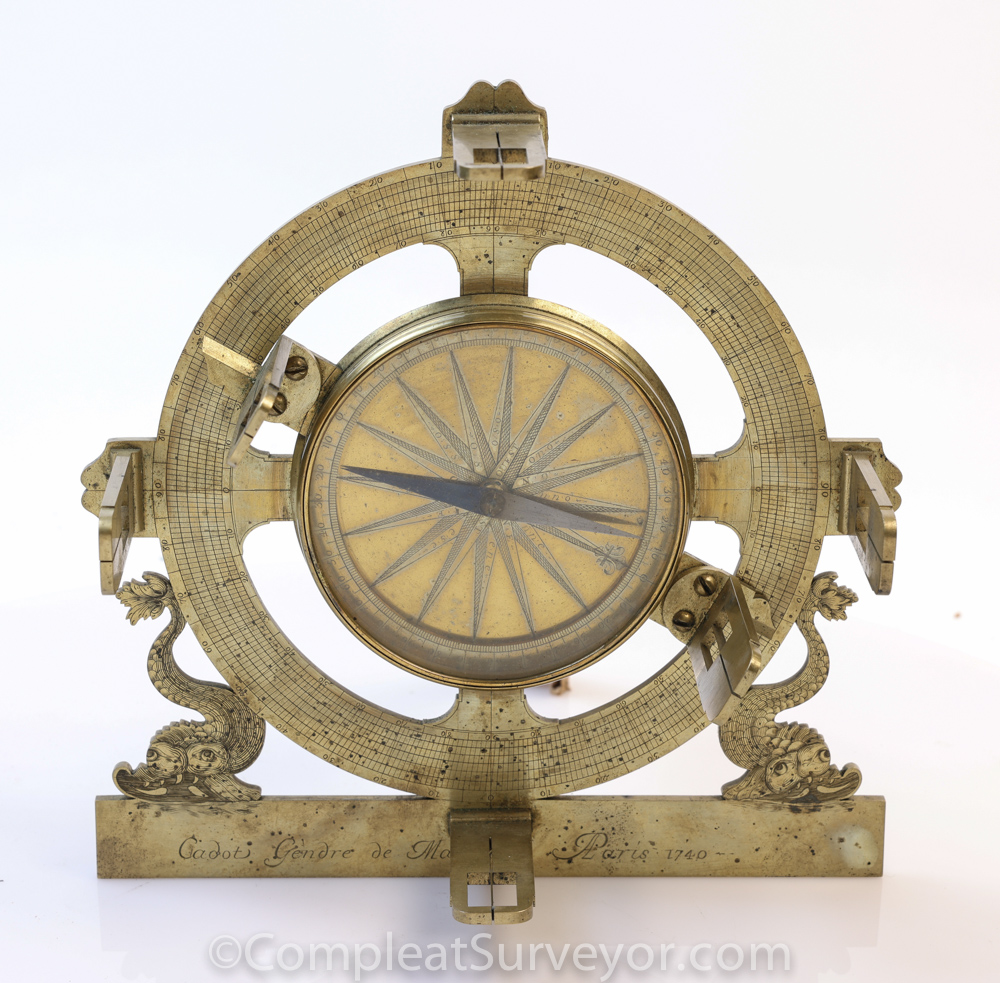
French 1740 Cadot Theodolite with Transversal Scale
Collectability
I view Second Generation Theodolites as VERY collectable instruments.
Theodolites, Graphometers, Plain Tables, and chains were the most popular surveying instruments used in Europe from 1600 to 1750, with Theodolites emerging as the most important surveying instrument post-1750. Theodolites really came of age starting in 1600, with Dou creating an almost timeless design for these instruments. A collector can find a variety of different design features in Second Generation Theodolites, and unlike First Generation Theodolites, Second Generation Theodolites are both relatively affordable and findable.
Important Books - Second Generation Theodolites
Below are some of the important books related to the Second Generation of Theodolites.
Dou's 1616 book is an important book. You was the first author to publish a diagram showing the basic form of a theodolite design that would remain popular for roughly 200 years. While Dou's design evolved over those 200 years, there isn't much difference from a user perspective from Dou's 1616 design and a simple theodolite made in 1800.
Interestingly, while numerous authors published books in the 16th century show their designs for a theodolite, very few authors published new theodolite designs after 1600. Dou published his book in 1616, and that's about it. The next important book published was in 1725 by Wyld, where heintroduced the next generation of a theodolite - the altazimuth theodolite.
William Leybourn published one of the most important surveying texts in the 17th and 18th centuries - The Compleat Surveyor. Leybourn didn't include a a diagram of a theodolite in his books, unfortunately. But he did describe the instrument and discuss its uses in good detail (along with that of the plane table and circumferentor). Leybourn published editions from 1653 thru 1722 - his 1657 second edition is linked below.
My Reference Materials
Here are the main reference books I used while researching my Ancient Surveying Webpages:
5-Volume Catalogue Of The Most Important Worldwide Private Collection Of Scientific Instruments (With 928 Color Illustrations). Written in German, but an amazing reference tool. The pictures are incredible - most of the instruments are not found on the internet. Crazy Expensive.
Bennett's Catalogue of Surveying and Related Instruments (2022). Fantastic pics and info about the surveying related instruments at the Galileo Museum (which has an INCREDIBLE collection of early instruments).
Bennett's The Divided Circle (1987). A History of Astronomy, Navigation and Surveying Instruments.
Delalande Antiques Two Volume book series on Astrolabes. The two volumes walk you thru how to use and collect Astrolabes. A must have if you want to collect Astrolabes.
Kiely's Surveying Instruments - Their History (1947) Somewhat dated now, but still has a great deal of relevant information. Not the easiest read, however.
Daumas' Scientific Instruments of the 17th and 18th Centuries (Translated into English 1972).
Richeson's English Land Measuring to 1800 (1966). A nice book that is mis-paginated unfortunately. But still contains some good information about early English land surveying.
Important Websites where you can use the search function (e.g. "Theodolite") to find instruments:
The Museo Galileo Virtual Museum - A Stunning Collection of Early Surveying Instruments
The Science Museum Group (UK Based)
Harvard University Collection of Scientific Instruments
The Museum of History and Science, Oxford
© 2020 Russ Uzes/Contact Me
